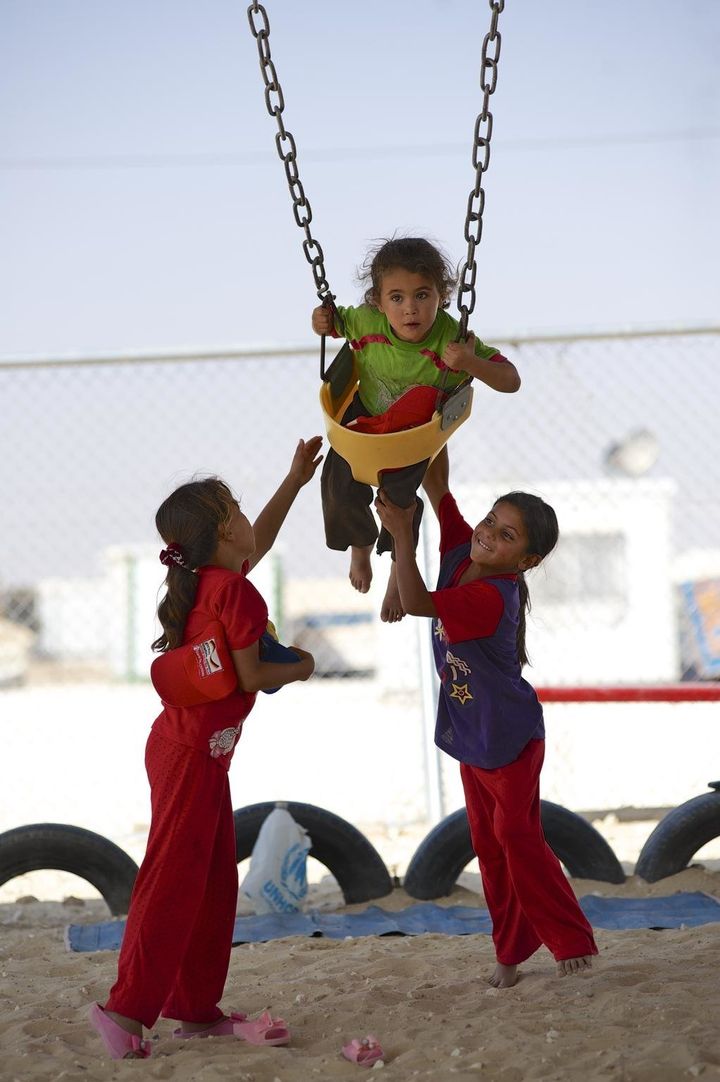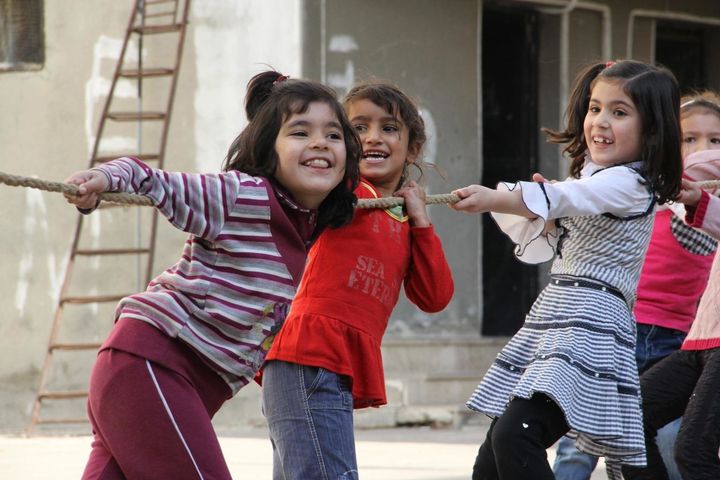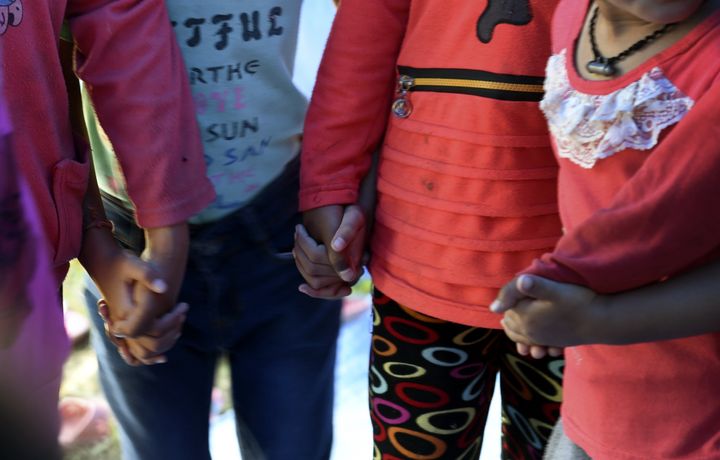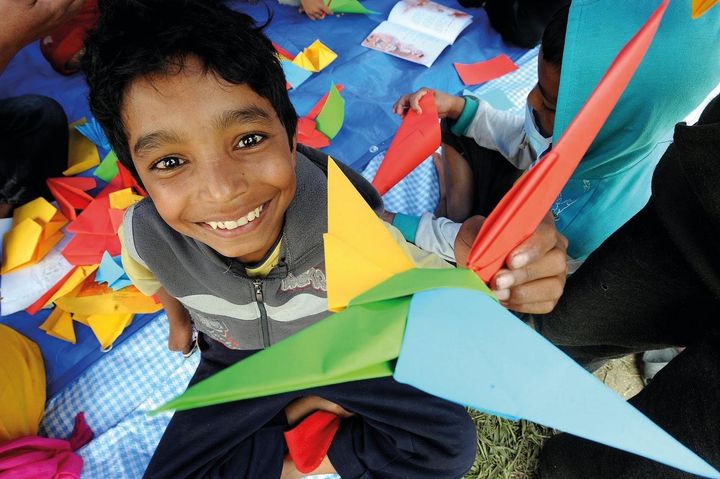Since battles, food shortages and shanty accommodations don’t take a break for summer, children in disaster zones are inevitably limited when it comes to reveling in the activities kids living in safe places get to enjoy.
But a number of aid groups are working to find creative ways this summer to give children facing unimaginable crises the chance to just be kids.

Girls play on a swing at a UNICEF-supported playground in the Za’atari camp for Syrian refugees, in Mafraq Governorate, near the Syrian border.
Now in its fifth year, the civil war in Syria has taken a toll on children. There, due to the heat and scarcity of water, thousands of kids are at a “high risk” of developing a number of debilitating illnesses, including acute diarrhea and hepatitis A, the Associated Press reported.
More than 1.1 million Syrian children have fled their homes for refugee camps, where they often just have a flimsy tent for protection and, at best, get access to makeshift schools.
To help prevent these kids from becoming the “lost generation,” UNICEF is working to establish educational and play opportunities for Syrian children both inside the war zone and in refugee camps.

Displaced children participating in UNICEF-supported psychosocial activities play tug of war, in a shelter in the city of Homs, capital of Homs Governorate.
“Providing children a safe space to learn, play and overcome the trauma they have witnessed -- even if for a short while -- is crucial, for both children and their parents,” Maria Calivis, UNICEF regional director for the Middle East and North Africa, said of a space for Syrian children in an unfinished housing complex.
As Nepal begins to recover from the devastating earthquake that claimed more than 5,000 lives, affected children are facing the worst summer of their lives.
Nearly 5,000 schools were destroyed and about 1.7 million kids were in need of urgent aid in the immediate aftermath of the disaster, according to UNICEF.

On May 4, 2015, 10-year-old Ranju Giri holds the hands of other children in Kathmandu, as she participates in an activity organized by UNICEF and World Vision at a tent camp set up for survivors of a devastating earthquake that shook Nepal.
To grant Nepalese children a safe place to process the trauma they experienced and play with other kids, World Vision is setting up 22 child friendly places.
UNICEF, together with nonprofit partner Seto Gurans, has also set up spaces for children in Nepal to play.

Children play in a tent housing a UNICEF-supported child-friendly space in Tundikhel, a large grass-covered area and important landmark in Kathmanudu.
One spot in Tundikhel, which is housing Kathmandu’s largest number of earthquake-displaced families, can accommodate more than 100 kids who get to play with puzzles, dolls, toys and other entertaining games.
“It’s really a sight of great relief to see them not crying but smiling and having fun at the same time,” Sunita Shakya, who works with Seto Gurans, said in a statement.
